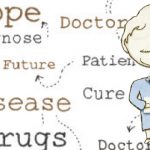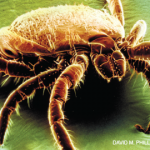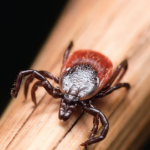Example: During infection, joint fluid usually contains a marked predominance of polymorphonuclear (PMN) leukocytes (~90%). In contrast, the percentage of PMNs declines during the post-infectious phase, and the percentages of lymphocytes and monocytes increase. Additionally, patients with post-infectious arthritis have increased frequencies of certain HLA-DR alleles, a TLR1 polymorphism, certain microRNAs and/or immune dysregulation of the CD4+ T effector cell/T regulatory cell ratio. For the most part, tests for these markers are not commercially available.
4. Stay current with emerging research on lyme arthritis treatment: Much of the research conducted in the Steere Laboratory at Massachusetts General Hospital is focused on uncovering mechanisms involved in the pathogenesis of Lyme disease to identify biomarkers of disease activity, develop diagnostic tests and help guide vaccine development.
To better understand the antibody response in Lyme disease, Dr. Steere and his colleagues recently conducted research investigating IgG subclasses of B. burgdorferi antibodies, examining how these responses differ from those of Lyme disease (LD)‐associated autoantibodies. They found that B. burgdorferi antibodies were primarily of the IgG1 and IgG3 subclasses with amounts increasing as the infection progressed. In contrast, LD‐associated autoantibodies were mainly of the IgG2 and IgG4 subclasses. These responses were found primarily in patients either with antibiotic‐refractory or antibiotic‐responsive arthritis, particularly in synovial fluid.8
“Importantly, IgG4 autoantibody levels in synovial fluid correlated directly with the magnitude of obliterative microvascular lesions and fibrosis in the synovial tissue of patients with post-infectious, antibiotic-refractory Lyme arthritis, implying that these antibodies may develop a pathologic phenotype,” he says.
Prevention
When Dr. Steere is not working in the lab to uncover the mysteries of Lyme disease activity, he spends one day each week in clinic caring for patients suffering from Lyme arthritis. He says one important lesson for patients and physicians alike is to take protective measures, such as using insect repellents and doing tick checks to avoid or recognize tick bites that may transmit Lyme disease with the potential to develop into Lyme arthritis.
Carina Stanton is a freelance science journalist in Denver.
References
- Centers for Disease Control and Prevention. Lyme disease statistics: How many people get Lyme disease? 2015 Sept 30.
- Centers for Disease Control and Prevention. Lyme disease: Data and statistics. 2017 Nov 13.
- Government of Canada. Health, Lyme disease: Surveillance of Lyme disease, statistics. 2018 Jul 12.
- Steere AC, Strle F, Wormser GP, et al. Lyme borreliosis. Nat Rev Dis Primers. 2016 Dec 15;2:16090. doi: 10.1038/nrdp.2016.90.
- Steere AC. Malawista SE, Snydman DR, et al. Lyme arthritis: An epidemic of oligoarticular arthritis in children and adults in three connecticut communities. Arthritis Rheum. 1977;20:7–17.
- Strle K, Jones KL, Drouin EE, et al. Borrelia burgdorferi RST1 (OspC Type A) genotype is associated with greater inflammation and more severe lyme disease. Am J Pathol. 2011 Jun;178(6):2726–2739.
- Steere AC, Angelis SM. Therapy for Lyme arthritis: Strategies for the treatment of antibiotic‐refractory arthritis. Arthritis Rheum. 2006 Oct;54(10):3079–3086.
- Sulka KB, Strle K, Crowley JT, et al. Lyme Disease‐associated IgG4 autoantibodies correlate with synovial pathology in antibiotic‐refractory Lyme arthritis. Arthritis Rheumatol. 2018 May 23. doi: 10.1002/art.40566. [Epub ahead of print]


